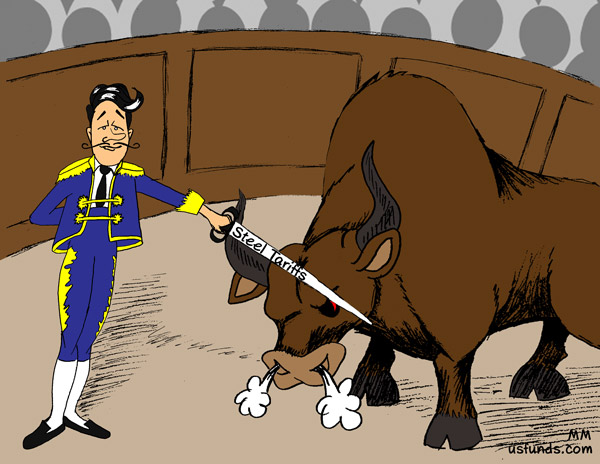Jeffrey Gundlach from DoubleLine Capital presented at the Strategic Investment Conference this past week. He started off his talk by saying we’re at a “moment of truth” that could break either way. So, now is not the time to have high conviction about the economy or markets.
Showing a chart of the US budget deficit as percent of GDP, Gundlach talked about the new situation we are in: we have a rising deficit without a recession. It seems set to explode in 2019. This, combined with the Fed balance sheet reduction, will mean $2T–$3T in new Treasury issuance.
Looking at the combined central bank balance sheet action, Gundlach sees net tightening starting in 2019. The market is finally starting to believe the Fed is serious and an attitude adjustment is underway.
On housing, Gundlach said the fundamentals look “pretty darn bad.”
All Roads Lead to Inflation
Jeffrey continued his present with a look at inflation. We’re seeing an uptick in Germany and Japan. He asked, "Is this an anomaly, or is a break-out to higher levels in the cards?""
There are two parts to inflation: core goods and core services. He noted that there is a big disparity between the two in the US. However, the core CPI is trending up.
Gundlach pointed out that there is a high correlation between core CPI and where GDP will be in 18 months, that core CPI is a leading indicator. A very high correlation between core CPI and ISM PMI also suggests a higher CPI ahead.
Bottom line: All of Gundlach’s indicators point to higher inflation.
He says it is comical that the Fed has been trying to get to 2% inflation, yet we are already there. So, if inflation does go higher, the question is not how it affects the economy, it’s how the markets will react to it.
He then turned to bonds, and says that when the 10-year cleared 2.5%, things changed. The stock market doesn’t like the action in bonds.
On valuations, Gundlach noted that the price-to-sales ratio of the S&P 500 is sky-high. Either sales must take off or stock prices must come down.
Emerging Markets look Attactive
He showed that the CAPE ratio for Emerging Markets (EM) equities is about half that of the S&P 500. It is not out of the question to think that the ratios will converge—meaning that EMs go up, and the US comes down.
Over the past year, EMs have outperformed the US while Europe has underperformed. On a relative basis, Europe/World markets have cratered and look cheap.
Until about mid-2016, the S&P 500 and high yield bonds performed about the same. They have since diverged, with the S&P 500 taking off and the high yield sector lagging.
The dollar will get cheaper
Gundlach talked about the US dollar next. He showed that dollar bull and bear cycles last about 7 years, cycling between overvaluation and undervaluation. Using this measure, he thinks the dollar is headed lower. Looking at a longer-term chart, the dollar sits right on a major support level. Will it hold?
The opposite is seen in gold. Gold has been building a base for years, and is bumping up against a critical level. If it breaks out, it (gold) could begin a new bull phase.
Jeffrey then went through a series of charts showing that various asset classes have broken through crucial trend lines. In particular, he makes a hard call on the long bond market, and gives us a line in the sand above which he says the bond bull market is over.
Source: Mauldin Economics















